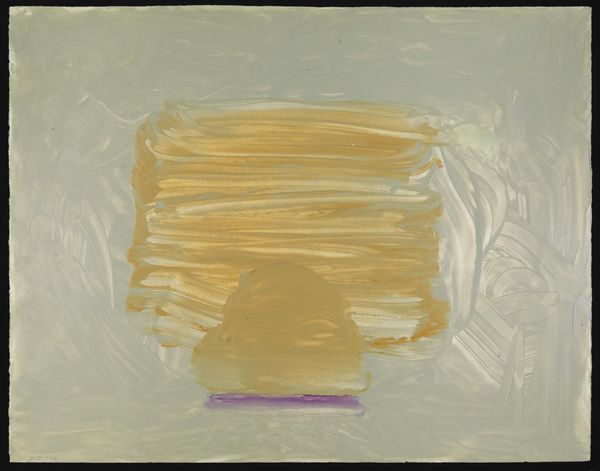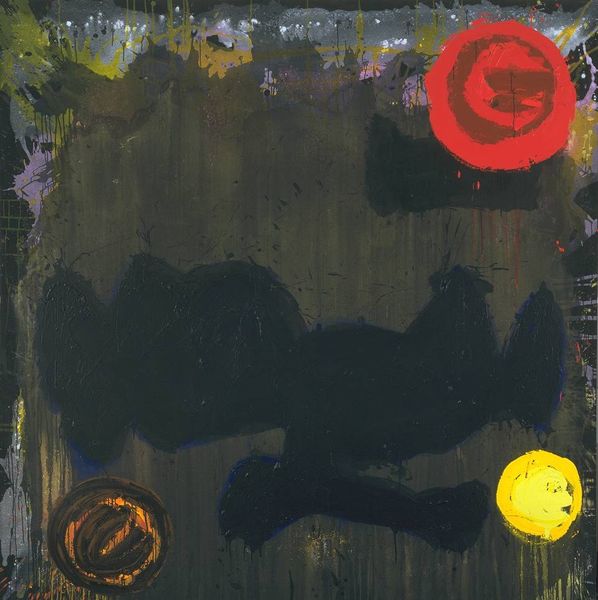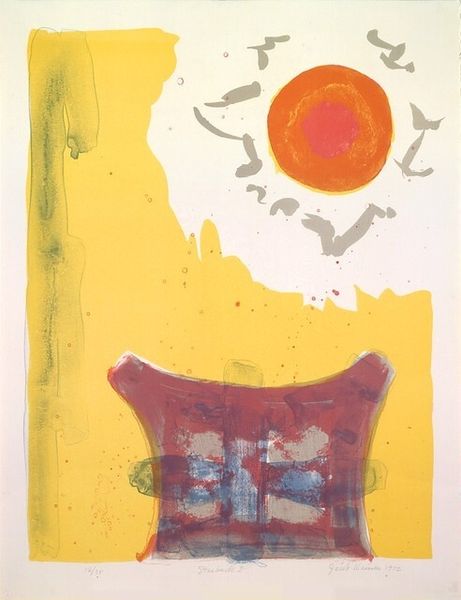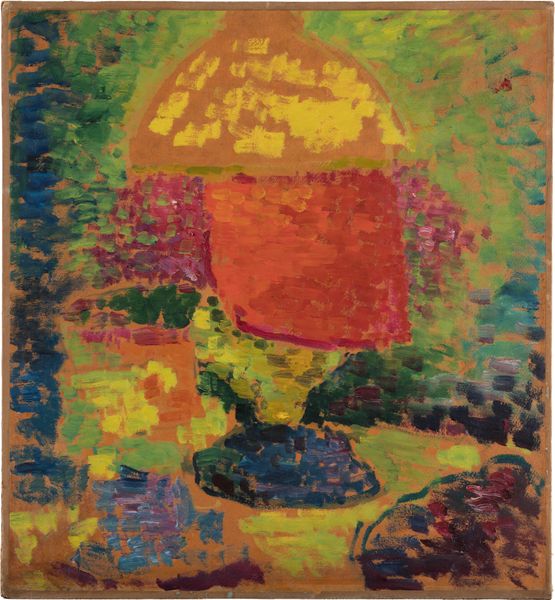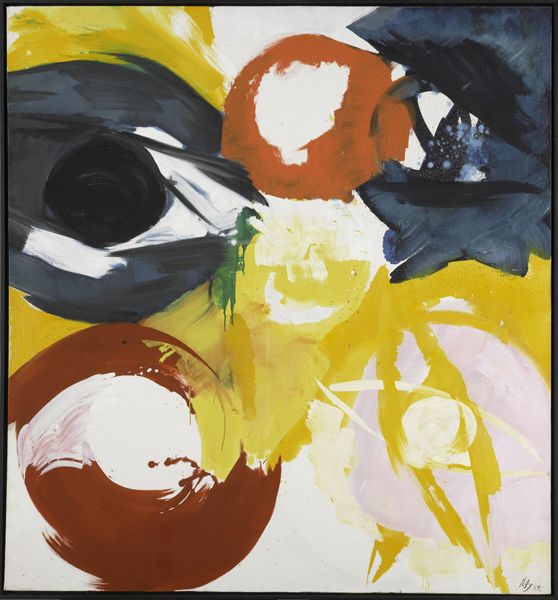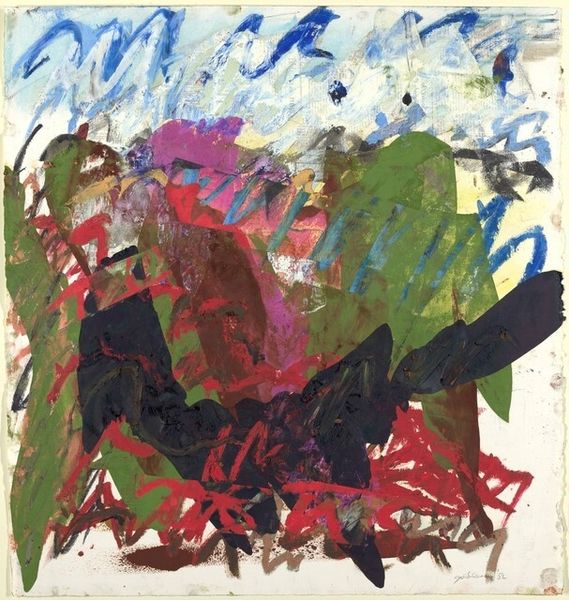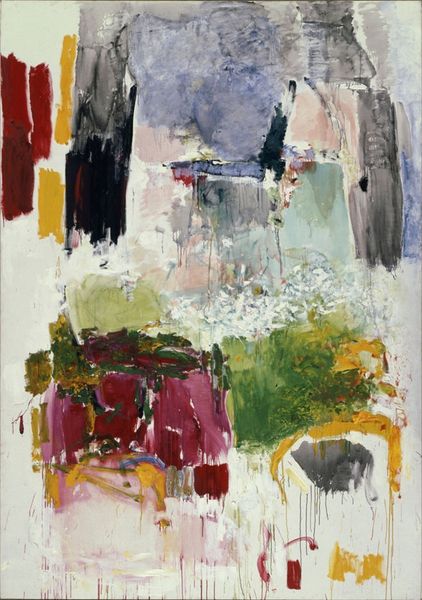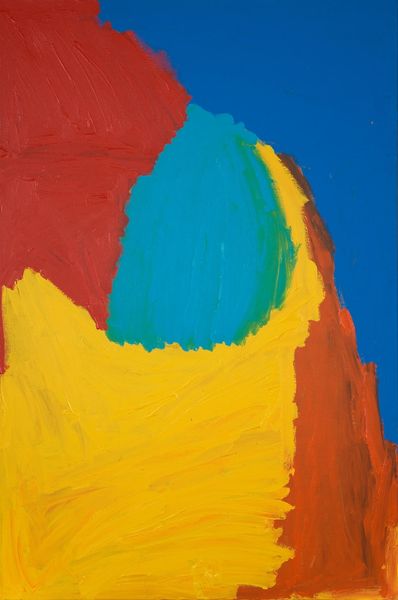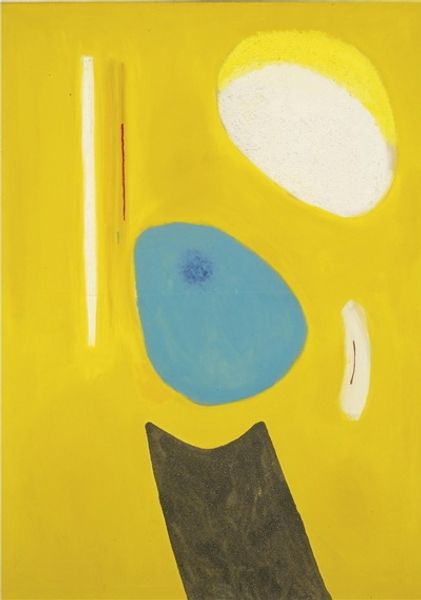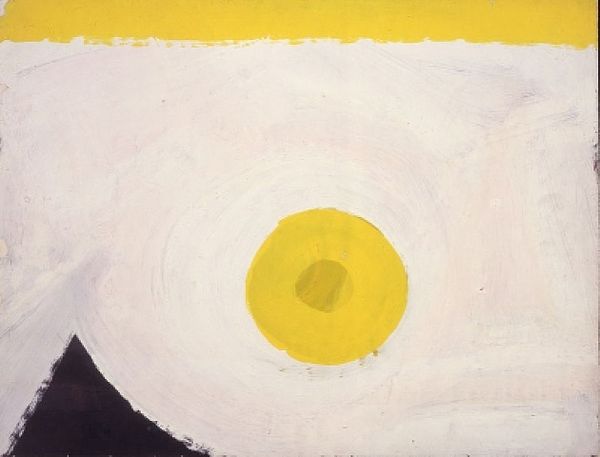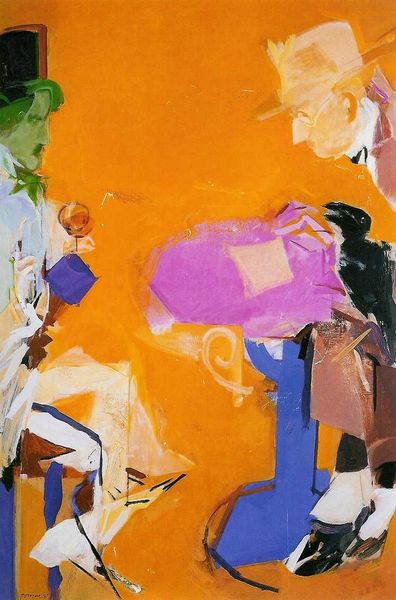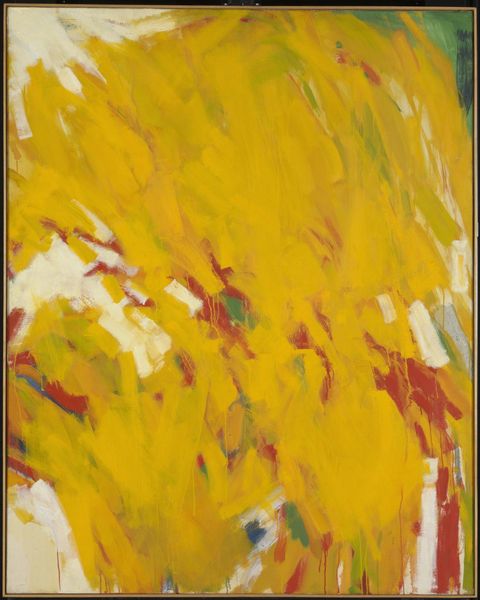
Copyright: Charles Garabedian,Fair Use
Editor: This is Charles Garabedian’s "Chinese Mr. Hyde" from 1975, rendered in acrylic paint. I’m immediately struck by its unsettling quality, the almost childlike rendering of the face combined with these strangely discordant textures. How do you interpret this work? Curator: I see a fascinating exploration of the very act of painting. Look at how Garabedian deploys the acrylic. He builds up these almost crude layers, contrasting the smooth, almost vacant expanse of the face with these aggressively textured areas in the lower section and around the eyes. Do you think the title suggests something about how identity is constructed and perhaps masked or fragmented? Editor: Yes, definitely! The idea of "Mr. Hyde" layered onto a "Chinese" identity hints at masking and perhaps the manipulation of materials to present different faces. The crude application of the acrylic almost feels like a deliberate attempt to dismantle any cohesive representation. Is he maybe challenging the viewer to see past surfaces? Curator: Exactly! He seems less concerned with illusionism or accurate representation and more with exposing the inherent properties of the acrylic and how it's manipulated. It forces us to consider painting as a physical process, as a construction of layers of material and texture, not merely as a window onto a pre-existing reality. And in 1975, this rejection of traditional art making aligns him with process-oriented artists who question high art boundaries. Editor: So it's less about 'who' is being represented and more about 'how' representation happens through material means? Curator: Precisely. The social context here includes the art world's turn away from formalism and towards embracing everyday materials. Garabedian seems to use a traditionally “fine” art material (acrylic) to create an "outsider" aesthetic that critiques both cultural stereotypes and the established art system itself. Editor: That’s fascinating! I initially saw just a strange portrait, but understanding the emphasis on the process and materiality changes everything. Curator: Indeed. Looking at art from this perspective opens up a whole new dimension of understanding!
Comments
No comments
Be the first to comment and join the conversation on the ultimate creative platform.
